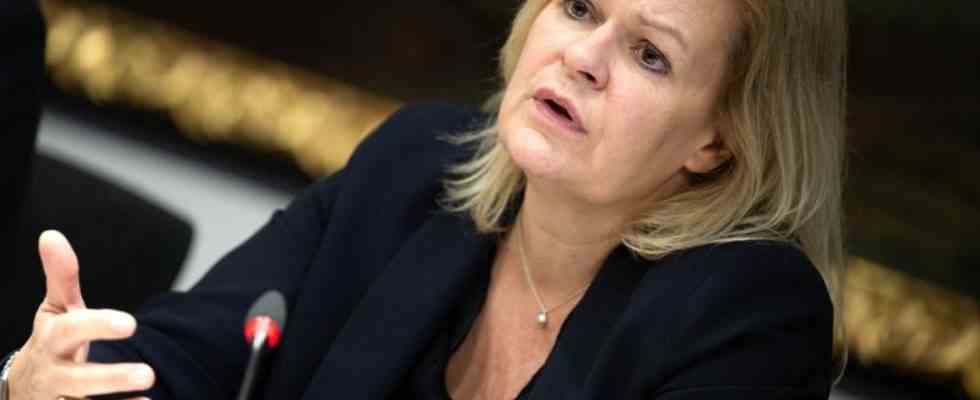migration
EU asylum reform: internal border controls as a last resort
Banks on a comprehensive reform of European migration policy: Federal Minister of the Interior Nancy Faeser. photo
© Sina Schuldt/dpa
Internal border controls are the exception in the EU. In order for this to remain so, Federal Interior Minister Faeser believes that progress must be made in reforming the Common European Asylum System.
If there is no agreement on better registration and distribution of asylum seekers in Europe by the summer, interior ministers see freedom of movement in the Schengen area at risk.
The time window for a comprehensive reform of the Common European Asylum System (CEAS) will close in the summer, said Federal Interior Minister Nancy Faeser (SPD) on Friday in Berlin after a meeting with interior ministers and state secretaries from five other EU countries. Until then, the EU member states would have to agree so that there would still be time for negotiations with Parliament. If an agreement does not succeed, “then the Schengen area with open internal borders is in great danger,” she warned. Everyone in the European Parliament and the Council should be aware of that.
Sweden also sees this risk, “but nobody wants it to go that far,” said the Swedish State Secretary in the Ministry of Justice and the Interior, Anders Hall. Sweden currently holds the EU Council Presidency and will hand over the baton to Spain on July 1.
Internal border controls must remain the exception, emphasized the Spanish Interior Minister Fernando Grande-Marlaska. For Spain, freedom of movement in the Schengen area is an important pillar of the European Union.
Time is running out
Time pressure is created by the upcoming European elections in spring 2024. “We have to make sure that we also limit irregular migration,” said Faeser, who had also invited representatives from Italy, France and Belgium to the meeting. Italian Interior Minister Matteo Piantedosi participated via video conference. “It’s about an overall system of responsibility on the one hand and solidarity on the other,” emphasized Faeser.
In concrete terms, it is about ensuring that those seeking protection are reliably registered in the EU countries in which they arrive first. Ideally, there should also be a look there in the future to see whether someone even has a chance of being recognized as a refugee. However, countries with external EU borders such as Italy or Malta have so far not been willing to do so. They insist that the distribution of asylum seekers within Europe must first be better regulated.
So far, only a few countries – especially Germany – have voluntarily accepted a few asylum seekers. Faeser said Germany had taken over 427 people from Italy and 93 asylum seekers from Cyprus through the solidarity mechanism, and further takeovers were planned. Italy has been blocking the return transfers of asylum seekers registered in Italy for several weeks, citing alleged technical problems.
Sweden’s Secretary of State Hall said he was convinced that an agreement would require very difficult compromises from all EU countries. “It will probably be a solution where nobody is happy with everything, but where at least everyone is equally dissatisfied with the joint solution,” he added.
Last year, one million asylum applications were made in the countries of the European Union, more than since 2016. In addition, there were almost four million people from Ukraine who do not have to apply for asylum in the EU, but who still need to be housed and cared for.
Effective control of the EU’s external borders is important, said Faeser. At the same time, she asserted: “It’s not about us pursuing a policy of isolation.”

